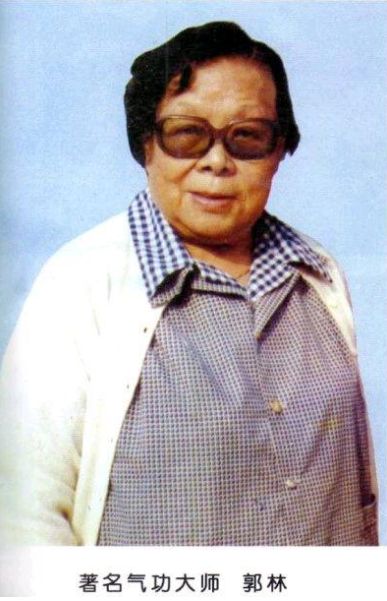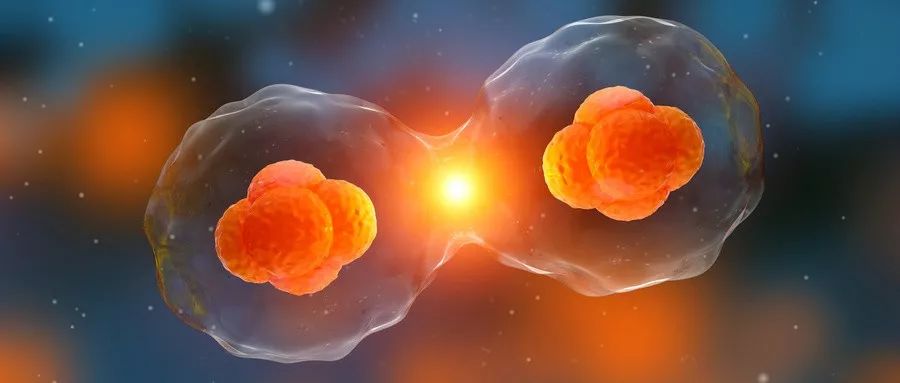Qigong is a “wonder” in the treasure trove of Chinese medicine, a healthcare exercise with distinct national characteristics within the heritage of traditional Chinese medicine.
When mentioning qigong, many practitioners immediately think of Guo Lin Qigong. The hot search terms related to “Guo Lin Qigong” online are often associated with cancer resistance and rehabilitation, leading many to question: Does Guo Lin Qigong really have anti-cancer effects? Is it as miraculous as rumored online?

Image source: Baidu screenshot
Before answering this question, we must clarify what “Guo Lin Qigong” is.
Qigong is a traditional Chinese health preservation method. In ancient times, it was also known as “Dan Dao”. It utilizes adjustments in breathing, body movements, and consciousness (adjusting breath, body, and mind) to strengthen the body, prevent and treat diseases, promote longevity, and develop potential through a method of physical and mental exercise.
Guo Lin Qigong, also known as “New Qigong Therapy”, belongs to the Tona school of practices. Its principle is to perform a special breathing method of “inhale-exhale-inhale” to take in a large amount of oxygen, combining physical movements, mental guidance, and internal focus to regulate the patient’s immune function and organ functions.
So, does Guo Lin Qigong really have anti-cancer effects?
The answer is that it has certain effects.
Teacher Guo Lin himself is the best answer to this question. In early 1949, Teacher Guo Lin was diagnosed with cervical cancer and underwent a total hysterectomy. In the 1950s, cancer was found to have metastasized to the bladder. After surgery, Teacher Guo Lin improved and redesigned the ancient qigong he learned in childhood based on the theory of Chinese meridians (practicing, wind breathing method, and sound emission method), and through personal experimentation, he found that this new qigong therapy indeed had significant therapeutic effects. This result was later validated by a large number of patients in society.

Image source: Baidu image (infringement removal)
Scholar Li Daoxian, author of “Analysis of the Physiological Effects of Guo Lin New Qigong on Cancer”, indicates that practicing Guo Lin New Qigong to nourish the body aids in the treatment of esophageal cardia cancer, indirectly answering this question.
Reminder:

Whether it is Teacher Guo Lin or Scholar Li Daoxian, practicing qigong is based on receiving scientifically standardized treatment.
It is important to understand that Guo Lin Qigong, Ba Duan Jin, and other exercises are merely supportive fitness activities for recovery. Therefore, practitioners should not naively believe that simply relying on practicing Guo Lin Qigong or Ba Duan Jin will make tumors disappear; this is not advisable.
What is the pathological mechanism of qigong in cancer resistance?
1. A large amount of oxygen intake increases blood oxygen levels.
Hypoxia is the source of all diseases. Tumor cells, due to non-functional blood vessels and rapid proliferation of cancer cells, lead to a lack of oxygen supply to cellular tissues. Additionally, studies have found that cancer cells can initiate special transcription processes in this hypoxic microenvironment, increasing the speed of tumor proliferation.

Image source: Shetu Network
Guo Lin Qigong emphasizes a large intake of oxygen,and its method essentially aims to enhance the patient’s immune system. The air in the atmosphere contains rich atmospheric ions, which can stimulate the body’s respiratory circulation, enhance the patient’s hematopoietic function, and expel turbid air from the body through regular breathing.
Tip:

Guo Lin Qigong allows cancer patients to practice at a slow, medium, or fast pace of wind breathing according to their condition and physical strength, enabling them to inhale a large amount of fresh oxygen during practice.
2. Combining sound emission to improve cardiopulmonary function.
What is sound emission? Sound emission refers to deep and prolonged deep breathing, followed by compensatory inhalation, which is achieved by actively adjusting the depth of breathing.
Some have compared the breathing frequency of Guo Lin Qigong with conventional exercises and found that:
In Guo Lin Qigong, the natural breathing frequency during practice is equivalent to sprinting and middle-distance running;
fast practice breathing frequency is equivalent to middle-distance running;
super fast practice breathing frequency is equivalent to middle and long-distance running.

Image source: Shetu Network
Of course, in practice, the depth and intensity of qigong breathing are not comparable to running, but its frequency is fast, and the volume of air intake and output increases, positively impacting the body’s cardiopulmonary function and disease resistance.
Scholar Li Jiaqing has used audio instruments and computers to explore the effects of sound emission on the human body, discovering that sound emission can enhance the excitability of brain nerve cells, promote blood circulation, enhance gastrointestinal motility, and improve metabolism, with clinical efficacy comparable to that of medications.
3. Comprehensive regulation of the neuro-endocrine-immune system
It is important to understand that the focus of qigong in cancer resistance is on overall yin-yang balance, rather than directly eliminating tumor cells.
Professor Yu Cunren from Beijing Traditional Chinese Medicine Hospital points out that practicing qigong can reduce the activity of the sympathetic nervous system, thereby lowering plasma dopamine and reducing renin activity, putting the body in a “relaxed” state; while enhancing brain function, it also lowers the body’s basal metabolism.
Additionally, qigong training can also affect changes in central mediators and endocrine, prolong cellular aging, and enhance immune function.
4. Group practice improves emotions
The greatest enemy during cancer treatment may be oneself.Dr. Lei Jiunan from the American Cancer Research Center believes that emotions and physiological functions are closely related; low mood and life stress can lead to reduced immune function.
The most important aspect of practicing Guo Lin Qigong is to eliminate emotional disturbances and emphasize a calm and peaceful mind. This mindset is crucial both before and during practice.
Regarding how to learn Guo Lin Qigong, I have found a teaching snippet for practitioners, for reference:
Here, I would like to conduct a small survey:
Be cautious of neglecting these points when practicing Guo Lin Qigong, or you may waste your efforts.
1. Correct mindset
If you choose to practice Guo Lin Qigong, you must first have confidence in yourself and believe in it. It is best to eliminate distractions during practice to achieve a relaxed and natural state.
The “relaxed” here refers to the relaxation of muscles and mental focus. “Calm” means eliminating distractions and calming the mind. “Natural” refers to the posture, breathing method, and mental focus during practice, which should be natural and not forced or overly pursued.
2. Understanding the “principles” is very important

Image source: Shetu Network
It is essential to clarify that the purpose of practicing Guo Lin Qigong is to overcome illness, so theoretical preparation before formally practicing qigong should not be taken lightly.Practicing qigong is not merely physical exercise; it emphasizes the combination of posture, breathing, and intention, which is the unity of physical exercise and consciousness.
3. Moderation is key
Everything has its limits, and practicing qigong also requires moderation.The best time to practice is generally in the morning, as the saying goes, “The morning is the key to the day.”
Of course, it depends on each practitioner’s schedule. It is important to note that regardless of the chosen time for practice, consistency is necessary. For health maintenance, daily practice should be no less than 1 hour, and for therapeutic purposes, it should be no less than 3 hours.
(Reminder:Practitioners should consider their physical condition, seasonal characteristics, and environmental conditions when practicing qigong.)
4. Gradual progress and perseverance.

Image source: Shetu Network
Guo Lin Qigong emphasizes the interdependence of intention, breath, and form.“Intention” refers to the use of mental focus; “breath” refers to the use of breathing and the flow of internal energy; “form” refers to the physical posture and movements during practice. One should follow the principle of “natural law” to achieve the level where intention guides breath, and breath guides form, reaching the state of mind and breath being interdependent.
Rushing for success or being lax in practice will lead to many adverse consequences; conversely, being overly lax will not achieve the desired effects. Avoid the mentality of “three days of fishing, two days of drying the net” and practice inconsistently.
5. Good lifestyle habits
Healthy living starts with good habits; moderation in smoking and drinking is the most basic and should be prioritized. Additionally, maintaining a healthy diet and regular sleep schedule is also very important.
Here, I want to remind practitioners:

Due to the verifiable anti-cancer effects of Guo Lin Qigong, various training institutions and “teaching” instructors have emerged in the market. Therefore, practitioners should be cautious in identifying certain “unethical” institutions:
1. Anyone claiming that practicing alone can replace hospital visits and medications is a fraud! Qigong can achieve anti-cancer effects to some extent, but it absolutely cannot replace the clinical treatment methods of formal medical institutions and healthcare professionals.
2.Anyone whose practice materials are exorbitantly priced should be approached with caution.
3.Anyone encouraging “one-on-one” teaching should be treated with suspicion. Most genuine qigong practitioners practice in pairs or groups, which is one of the reasons why practicing qigong aids in cancer resistance. Additionally, during practice, one should learn to communicate with peers to correct mistakes in practice.
References:
1. The Principles of Guo Lin Qigong in Cancer Resistance. Mi Jian
2. Yu Tianchi, Tang Bo. Research Progress on Targeted Therapy of Hypoxia-Inducible Factor 1 and Hypoxia-Inducible Factor 2 Inhibitors in Cancer. [J]. Medical Review, 2017, 23(7): 1306.
3. Shen Xiaodong, Hua Weiguo. Overview and Prospects of the Anti-Cancer Effects and Mechanisms of Guo Lin New Qigong. [J]. Journal of Traditional Chinese Medicine Literature, 2006, 24(3): 52-55.
4. Rehabilitation Paradise
Cover image source: Shetu Network licensed library
Editor: Ovarian Cancer Mutual Aid Group

Travel, and as you see more of the world, you will realize that the things you once cared about are not significant.
Today’s Insight
Recommended Reading:
-
How do long-term survivors manage to live beyond five or ten years?
-
60% of patients experience symptoms that can be effectively alleviated with this method.
-
This “good medicine” costs nothing and can help restore health.
-
Simple and easy, the most suitable exercise for cancer patients is actually this.
-
She shares her 26-year cancer-fighting experience, telling us that “optimism” is not enough.

Clickto read the original article for more information.
↓↓↓
 If you find this helpful, please click “Like”
If you find this helpful, please click “Like”

